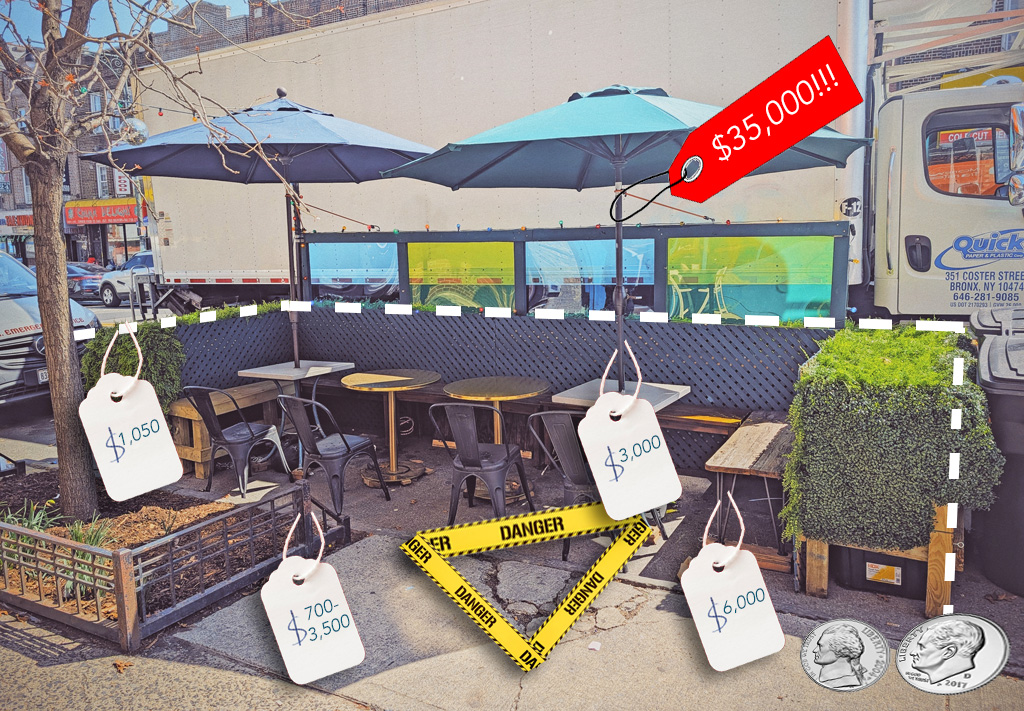
It is little wonder why the rules of the road for cyclists are so poorly understood. They are hopelessly complex. The first layer of complexity (typical of many areas of law in the U.S.) has three parts: the interplay between state and municipal law governing the same subject matter; the interplay between legislation and administrative regulations; and the common-law system by which judges apply and give new and sometimes unexpected meanings to legislation and regulations.
But there is a second and even more byzantine set of twists to interpreting the rules of the road applicable to cyclists, because much like a typical road, which has no designated space for cyclists, the traffic laws also lack a clearly-marked “designated space” for cyclists.
Under New York state's Vehicle and Traffic Law Section 1231, cyclists have the same rights and the same responsibilities as operators of vehicles, except when either (1) there is a more specific rule that applies to cyclists, or (2) the rule in question that applies to “vehicles” by its nature has no application to cyclists. The rule, in essence, is that “bikes are like cars--except when they’re not.”
This approach of lumping cyclists along with operators of motor vehicles with an ill-defined “you-know-it-when-you-see-it” exception is a recipe for confusion and controversy. The traffic code should be overhauled from the bottom up, with motor vehicles, human powered vehicles, and pedestrians each being treated as a distinct mode of traffic.
In the meantime, I created a “BikeNYC Law Decision Tree” to assist in determining what law applies to cyclists:
Here are some practical applications showing how the decision tree works. In each case, the numbers in the parentheses indicate the numbered box on the decision tree that is being discussed.
1. Riding on the Left
NYS VTL 1234 applies directly and requires cyclists to ride on the right (1), but it is superseded under the RCNY (6), and no other provision of the VTL (2) or the NYS CCR (7) apply. 34 RCNY 4-12(p)(3) (page 61) allows cyclists to ride on the left or the right hand side of a 40’ or wider one-way roadway (8). For roadways narrower than 40’ (e.g., most east-west streets in Manhattan ), there is no rule (8, 9). Yet NYPD sometimes enforces the superseded VTL 1234 in New York City by ticketing cyclists who are riding on the left, and sometimes cyclists have to go through several layers of appeal to find a judge who understands how these rules apply (14).
2. Signaling Turns
There is no special signaling rule for cyclists in VTL article 34(1). VTL 1163(b) says the operator of a “vehicle” must signal 100’ (about one third of a short city block) before turning (2). But a court determined that this rule, “by its nature,” has no application to cyclists, and so the “bikes are like vehicles” approach of VTL 1231 does not apply to require a 100’ advance signal, and no other regulations or rules directly apply (4; 7-9; 14). However, a second, later decision cuts back on the first decision, and held that cyclists do have to signal their turns at some point(14). Exactly how far in advance a cyclist must signal remains an open question.
3. Riding in the bus lane
No state regulations govern use of bus lanes (1, 2, 7). 34 RCNY 4-12(m) (page 61) prohibits “driv[ing] a vehicle” in a bus lane (8). Under state law, the “bikes are like vehicles” approach of VTL 1231 would mean that bicycles are excluded from bus lanes like other vehicles. But this is a city regulation, and there is no equivalent of VTL 1231 to make bicycles “like” other vehicles. Absent an express prohibition on bikes in the bus lane, they are allowed -- except in a civil case, in which a judge might conclude that a cyclist breaches a duty of care by riding in the bus lane (14). (In my view, this loophole should be closed, given the danger to cyclists of sharing the bus lane with buses and the inefficiency from an overall transportation perspective of allowing a cyclist to hold up a bus full of passengers).
Steve Vaccaro is an attorney at The Law Office of Vaccaro & White.





